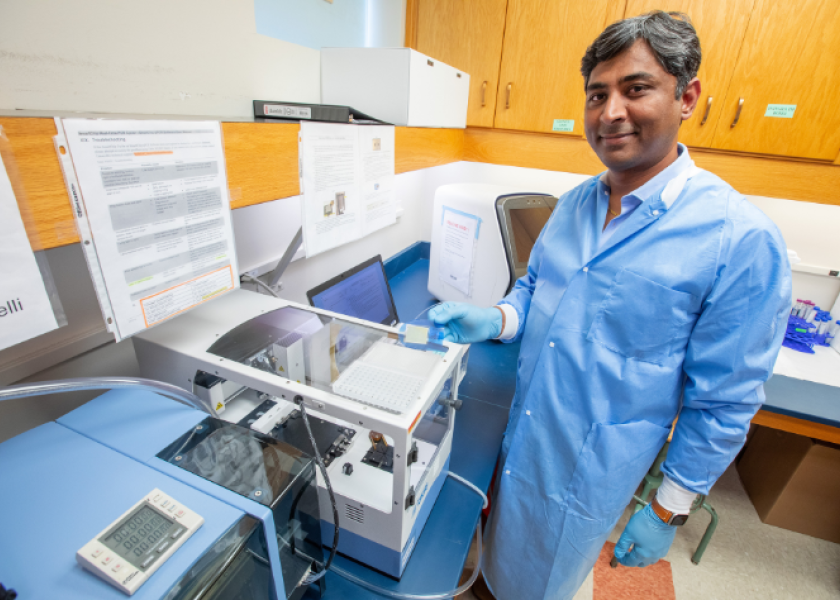Iowa State University Advances Veterinary Diagnostics with High-Volume Testing Innovation

Iowa State University's Veterinary Diagnostic Laboratory (VDL) is set to revolutionize molecular diagnostic testing with the introduction of a cutting-edge machine—the “SmartChip.” This innovative device can hold over 5,000 samples on a plate no larger than a postage stamp and uses quantitative polymerase chain reaction (qPCR) testing technology, combined with a 384-sample system featuring automated handling features, to significantly enhance its testing capacity, says a recent release.
“The historical patterns of pathogens are changing, so we need to be prepared for risks we haven’t seen before. Having this high-throughput capability will allow us to meet industry needs, providing more cost-efficient diagnostic tests as the need for testing grows,” says Rahul Nelli, a research assistant professor of veterinary diagnostic and production animal medicine, in the release.
To refine the use of high-volume testing methods, the VDL recently secured a nearly $1 million grant from the U.S. Department of Agriculture's Animal and Plant Health Inspection Service (APHIS). The project, funded by the American Rescue Plan Act of 2021, aims to prepare for future disease outbreaks. Through this initiative, researchers will ensure the accuracy and integration of the novel high-volume testing methods with existing systems for tracking and reporting test results.
“ISU VDL’s first-hand experience in responding to pandemics of high consequence to both animal and human health over the past few years, such as highly pathogenic avian influenza and COVID-19, have clearly illustrated the value of high-throughput testing platforms and need for further innovation,” said Dr. Rodger Main, ISU VDL director, in the release.
The SmartChip testing relies on microfluidic technology to detect targets of interest in samples, using a volume 100 times smaller than the VDL's standard 96-well machines, the release explains. With samples precisely distributed in the chip's 5,184 testing wells, the SmartChip machines can produce up to 30,000 test results per day. In comparison, the conventional 96-well method yields approximately 2,000 tests. Additionally, the 384-well machine offers a more moderate increase in capacity, capable of handling about 9,000 tests per day through smaller samples and automated loading.
Nelli envisions the SmartChip testing as a reserve resource for sudden spikes in demand for qPCR tests. This reliable method detects trace amounts of genetic material, including infectious agents in humans and animals. On the other hand, the 384-well automated machines can be part of regular lab operations, mitigating labor shortages. Moreover, by making test prices more affordable, they pave the way for wider use of surveillance testing among livestock producers.
Over the next two years, researchers will focus on integrating the new testing machines with existing reporting software. They will also validate the new methods and develop protocols for various samples used in veterinary diagnostics, including fluids, fecal matter, eggshells, and feathers. By 2025, these high-capacity testing methods could potentially be implemented in the VDL.
Main emphasizes in the release that ISU VDL, with the largest veterinary diagnostic laboratory caseload in the nation, plays a crucial role in serving the needs of 21st-century food animal agriculture. Consequently, the next-generation high-throughput testing platforms will undeniably contribute to fulfilling these requirements.







